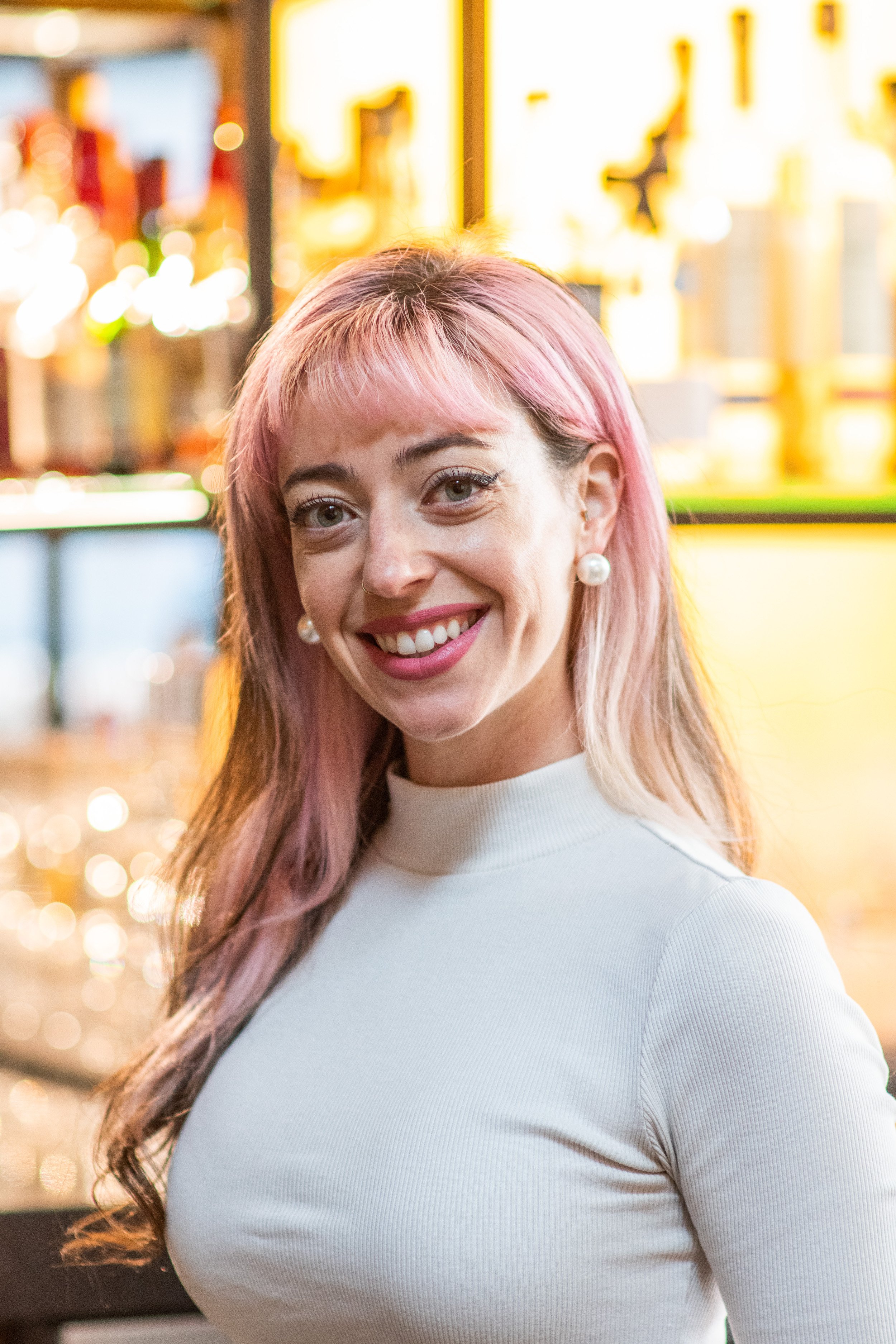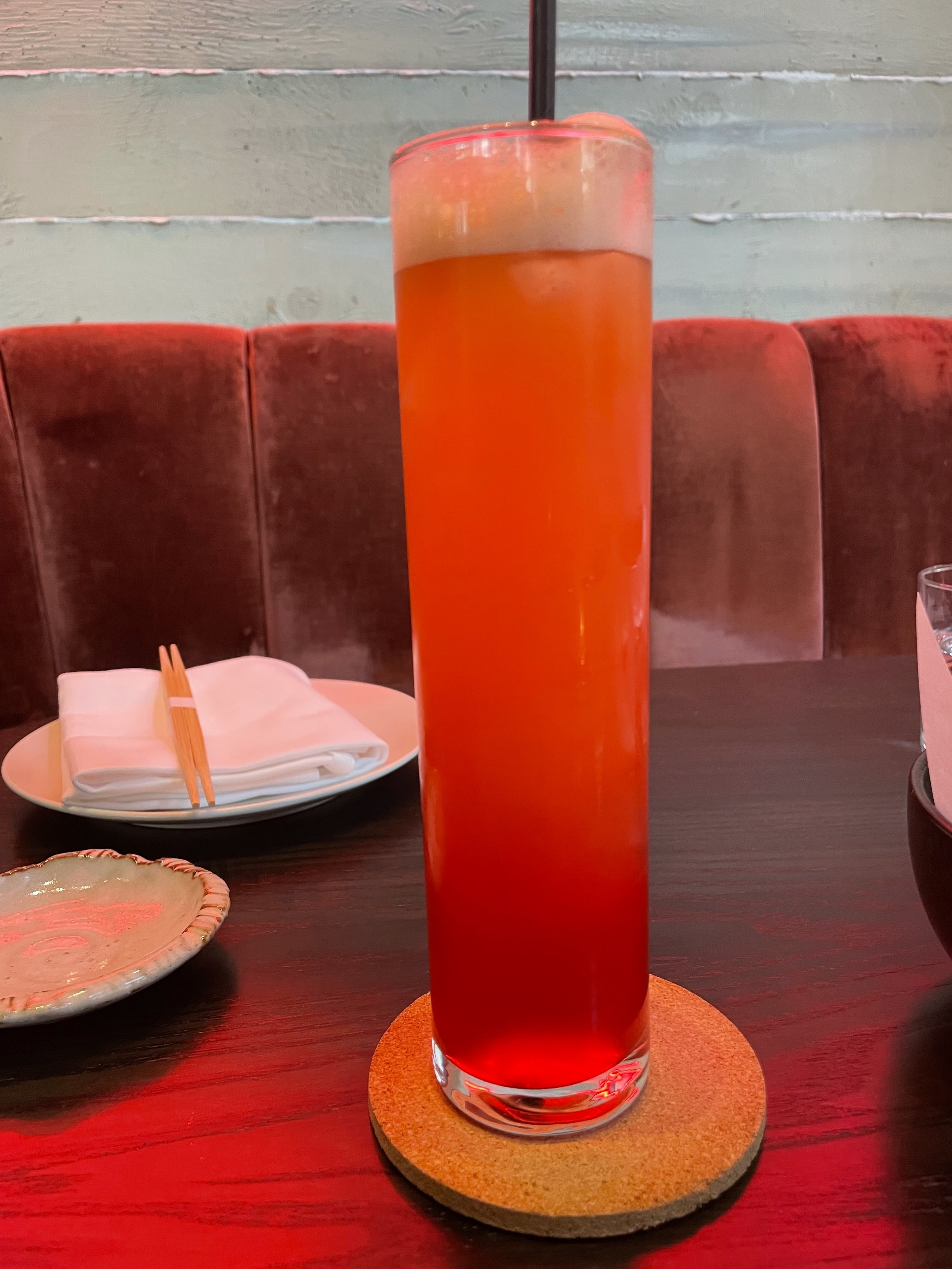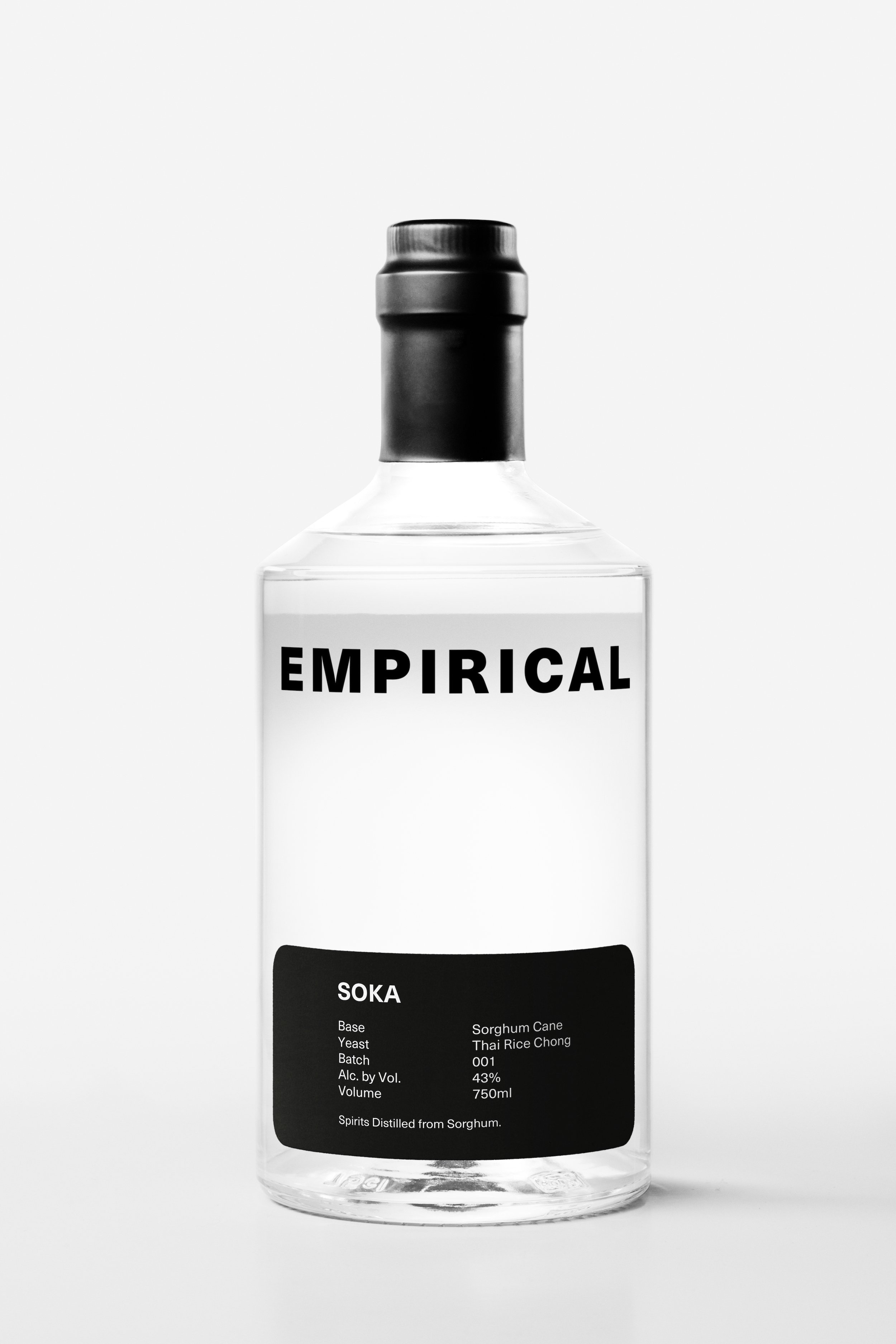From Behind the Bar with Natalie Lichtman, PABU Izakaya
Natalie Lichtman photo credit Todd Porter & Diane Cu-Porter
Natalie Lichtman has worked at some of the most renowned bars and restaurants in San Francisco including Tosca Cafe, Elixir, Nico Restaurant and Traveler at 25 Lusk. She credits her mentor, H. Joseph Ehrmann, owner of San Francisco’s Elixir, with teaching her production methods and how to evaluate the quality of spirits. At PABU she crafts her own themed cocktail list inspired by various aspects of Japanese culture. Following on the heels of previous bar menus that showcased the Japanese rail system and retro arcade games, her recent The Book of Yokai: Mysterious Creatures of Japanese Folklore themed menu involved nearly six months of researching, conceptualizing and testing out cocktails, and utilized her skills as an artist and illustrator to design the menu, creating caricatures of each Yokai.
How would you describe your bar?
The bar at Pabu is lively, delicious, and magical. The team knows their stuff and can be trusted with favorite classics or a new whimsy. It’s been known as a creative cocktail bar with an unbeatable happy hour. A guest can order their tried and true Asahi with sake can, or sip on rare Japanese whiskies.
What drink have you added to the menu recently (please include photo and recipe)
Notorious Spumoni
The Notorious Spumoni. It’s inspired by the popular Japanese aperitivo simply called the “Spumoni”. Spumoni comes from the Italian word for “foam”. The cocktail is traditionally a blend of Campari, fluffed up and aerated grapefruit juice, and tonic water. It’s refreshing, bubbly and easy to drink one after another. The Notorious Spumoni is a variation where I infuse the red bitter aperitif with cacao nibs to create more depth.
Recipe:
2oz Cacao nib-infused Martini & Rossi Vibrante
1oz fresh orange juice
2oz fresh grapefruit juice
3oz tonic water
We layer the aperitivo with a frothed blend of grapefruit juice, orange juice, and tonic water. The drink is served in an extra tall and slim Collins glass with a beautiful color gradient effect capped with a thin layer of fluffy foam.
Empirical Soka photo courtesy of Empirical
How do you stay up to date with current drink trends?
I really enjoy the line of spirits from Empirical. I appreciate the approach they’ve taken as an undefined freeform spirit, really giving attention to the integrity of the product instead of trying to fit into an established category. Read more about Empirical.
What do you love and dislike most about the industry?
I love the opportunities that eager bartenders have in front of them. When I was hoping to get a foot in the door, I picked what I saw to be the most unattainable goal and I met it. People can do that in this industry and I think it’s amazing. In this country, there is an unfortunate bias against women, queer, trans people, and people of color, but at the same time this industry is creating new ways to support and elevate those who have been systemically pushed down. Brands are shifting their focus to supporting wellness, leaders on the scene are going sober and still achieving amazing success in the beverage industry. I love that we have the opportunities and avenues to make our dreams happen.
I struggle with the competitive nature and pressure of the industry. Yes, competitions are incredible ways to network and grow skills and I believe they have a place in this industry. When it comes to lists and name dropping and trying to climb social ladders, that’s when I become disheartened. I think we’re all so excellent and talented in different ways. I worry that young bartenders will be putting their worth in the wrong places.
What’s the best thing to happen in your bar lately?
A seamless service. My team means the world to me, and their personal successes are what I aim to help them achieve. A busy night getting crushed by tickets from the dining room and moving nonstop around a triangle-shaped bar layout to service a 22-seat full dinner and drinks bartop is not an easy task if you hate your job. Running through a seamless service with bright and professional demeanor, good decision-making skills, and trust in the process that I’ve built, shows me that they respect me as much as I respect them. It’s amazing to foster and be a part of an environment of trust, education, and growth.
Who’s your favorite bartender or mentor and why?
I’ve been so fortunate to work with multiple incredible people who have filled mentor roles in my career. While I’ve never had one mentor along this whole ride, the most recent and relevant when it came to showing me how to be street smart, professional, and accountable every day would be Simone Mims. She asked the questions that I was hoping someone would just tell me the answer to and she pushed me to be confident in every choice I made.
What are the advantages to working at a restaurant bar?
Not everyone drinks alcohol, but everyone has to eat! It’s always been special to me to work in a house with a great dining component. You’ll meet the lone traveler looking for an attentive and friendly experience, the happy hour group crushing handrolls, beers and shots, or the locals enjoying bites and cocktails that they trust to be crafted with sophistication and care. It casts a wider net and makes our job more exciting.
What was the process for creating The Book of Yokai themed menu?
After locking in the theme — The Cocktail Book of Yokai — I did my research! I dove into lots of books and scholarly articles to learn about these creatures of folklore. I made a longlist of my favorite characters and started to build drinks around them. Sometimes I was more inspired by an ingredient or a piece of glassware in which case the drink came first and I would find the perfect Yokai to match it with. From there, I illustrated each Yokai holding their namesake cocktail as it would be served to the guest, glassware and garnish and all. I put together a little blurb about each character and assembled the menu in chapters, meant to be read through and enjoyed.
What are some techniques that you’ve been experimenting with?
I’ve been experimenting with building aromatized low proof or entirely non-alcoholic botanical beverages. My inspiration comes from French aperitif wines and the drinking culture in Southern France, Spain, and surrounding coastal islands.
What jigger do you use and why?
I use standard stainless steel Japanese jiggers that you can get from Cocktail Kingdom. I like to prioritize efficiency in the drink-building process and I find that these jiggers can fit easily and flip around quickly in my smaller hands.
How long is a normal shift and how many shifts do you work in a week?
A normal bartending shift is 8 hours. I typically work 4 bartending shifts a week and one behind the scenes administrative day.



